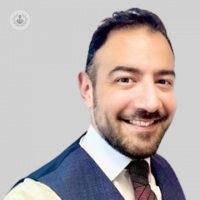A comprehensive guide to Breast reconstruction: Techniques and innovations
Autore:Breast reconstruction is a surgical procedure aimed at restoring the shape and appearance of the breast following mastectomy or lumpectomy. Advancements in surgical techniques and innovations have significantly improved outcomes, providing patients with more options and better results. This guide from leading cosmetic and reconstructive plastic surgeon Mr Nikos Lymperopoulos explores the various techniques and recent innovations in breast reconstruction.

What are the different types of breast reconstruction?
Implant-based reconstruction
Implant-based reconstruction is one of the most common methods and involves placing a silicone or saline implant to recreate the breast shape. This procedure can be performed either at the same time as the mastectomy (immediate reconstruction) or at a later date (delayed reconstruction).
-
- Advantages: Shorter surgery time, less initial recovery period.
- Disadvantages: Potential need for future surgeries to replace implants, risk of implant complications.
Autologous or flap reconstruction
Autologous reconstruction uses the patient's own tissue, taken from another part of the body, to reconstruct the breast. Common types of flap reconstruction include:
-
- DIEP flap: Uses tissue from the lower abdomen without sacrificing the abdominal muscles.
- TRAM flap: Uses tissue and muscle from the lower abdomen.
- Latissimus dorsi flap: Uses tissue and muscle from the upper back.
- SGAP/IGAP flaps: Use tissue from the buttocks.
- Advantages: More natural look and feel, no risk of implant-related complications.
- Disadvantages: Longer surgery and recovery time, potential for complications at the donor site.
Combination reconstruction
In some cases, a combination of implant and autologous tissue is used to achieve the desired breast shape and size.
What are the latest innovations in breast reconstruction?
Nipple-sparing mastectomy
Nipple-sparing mastectomy preserves the nipple and areola, allowing for a more natural-looking reconstruction. This technique can be used in conjunction with both implant-based and autologous reconstruction.
Pre-pectoral implants
Traditional implant placement involves positioning the implant under the chest muscle. Pre-pectoral implants are placed above the muscle, reducing pain and recovery time while improving aesthetic outcomes.
3D imaging and printing
Advances in 3D imaging and printing technology allow surgeons to create customised implants and surgical guides, improving the precision and outcome of the reconstruction.
Fat grafting
Fat grafting involves transferring fat from another part of the body to the breast area to improve contour and symmetry. This technique can be used alone or in combination with other reconstruction methods.
Enhanced recovery after surgery (eras) protocols
ERAS protocols involve a set of perioperative practices aimed at reducing recovery time and improving outcomes. These include optimised pain management, minimally invasive surgical techniques, and early mobilisation.
What other considerations are there, and what’s involved in recovery?
- Patient consultation: It's crucial for patients to have a thorough consultation with their surgeon to discuss their options, expectations, and any potential risks.
- Recovery time: Recovery time varies depending on the type of reconstruction. Implant-based reconstruction typically has a shorter recovery period, while flap reconstruction may require a longer recovery.
- Post-surgery care: Patients should follow their surgeon's post-operative care instructions closely, including wound care, activity restrictions, and follow-up appointments.
Breast reconstruction offers a pathway to restoring the appearance and confidence of patients who have undergone breast surgery due to cancer or other conditions. With the variety of techniques and innovations available, patients have more options than ever to achieve their desired outcomes. Consulting with a skilled and experienced surgeon is essential to determining the best approach for each individual patient.
Are you looking for expert breast reconstruction surgery? Arrange a consultation with Mr Lymperopoulos via his Top Doctors profile.


